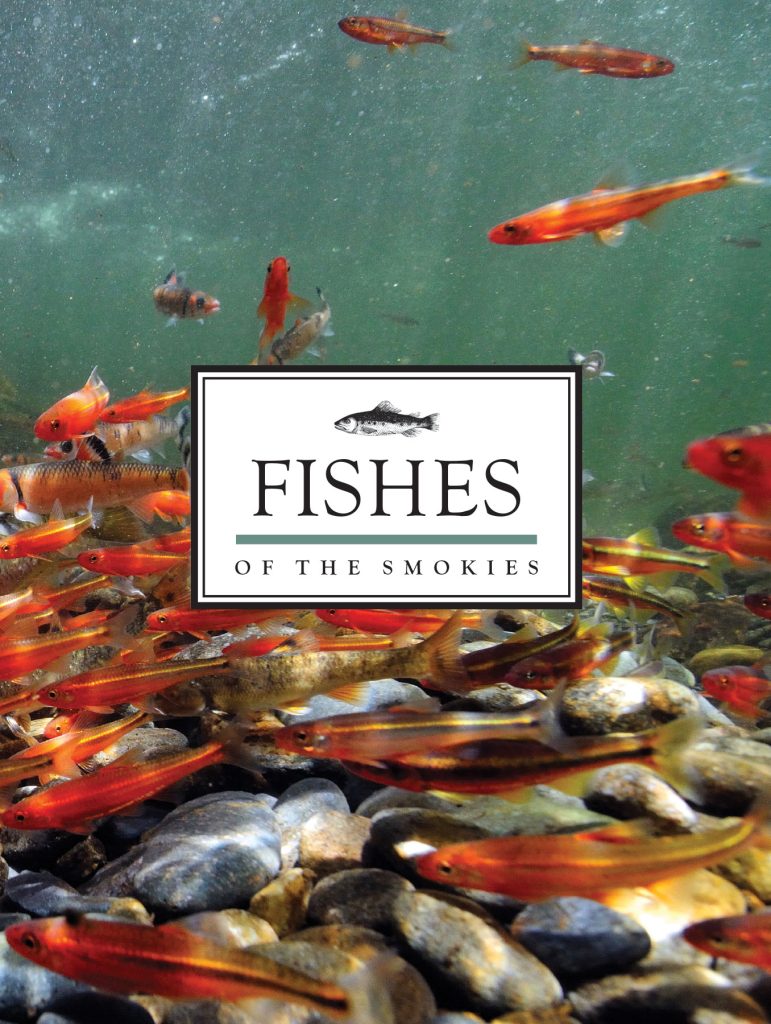
By George Ellison
Sicklefin Redhorse . . . Warmouth . . . Black Crappie . . . Mottled Sculpin . . . Sauger . . . Smoky Madtom . . . Gilt Darter . . . Topminow . . . Mirror Shiner . . . Rosyside Dace . . . Central Stoneroller . . . Longnose Gar . . . Gizzard Shad.
 Those are but a few of the 80 species of fish residing in the 2,900 miles of rivers and streams draining the tracts of land in East Tennessee and Western North Carolina set aside in 1934 as Great Smoky Mountains National Park. Many knew little about this aquatic abundance until very recently, when Great Smoky Mountains Association published Fishes of the Smokies by Grant Fisher.
Those are but a few of the 80 species of fish residing in the 2,900 miles of rivers and streams draining the tracts of land in East Tennessee and Western North Carolina set aside in 1934 as Great Smoky Mountains National Park. Many knew little about this aquatic abundance until very recently, when Great Smoky Mountains Association published Fishes of the Smokies by Grant Fisher.
Fisher brought years of aquatic research in and out of the water to the challenge of producing a pocket-sized field guide that could hold its own with others in the distinguished “Of the Smokies” series initiated by GSMA 30 years ago. Fishes of the Smokies joins the popular line that also includes field guides to birds, wildflowers, reptiles, amphibians, ferns, trees, mammals, and butterflies and moths.
From its detailed species profiles to informative overviews, Fishes of the Smokies is but the latest in a long tradition of field guides to park flora and fauna created by those with the most intimate knowledge of the mountains. Each species is profiled on a separate page and described with key details, including habitat, diet, and ecological and cultural history.
Edited by GSMA Publications Associate Aaron Searcy, the book features watercolor illustrations, detailed photography, and a number of thoughtful visual enhancements by designer Lisa Horstman. “Great Smoky Mountains Association may be a small, regional publisher,” said Searcy, “but it’s one with a special superpower thanks to its unique position as an established partner to a national park.”
As for the future of the series, GSMA Creative Services Director Frances Figart said the publishers are now working on an expansive guide to the insects of the park. “It will be our first literary field guide,” said Figart. “It will be written by Director of the Highlands Biological Station Dr. James Costa and illustrated by his wife, Leslie Costa, and by Emma DuFort of GSMA.”
In addition to individual species’ accounts and descriptions, Dr. Costa will be presenting some of the material in narrative overviews of micro-ecosystems where various insects thrive, giving the reader a feel for communities of animals, trees, plants, lichens, fungi, and other species that collaborate in entanglement with insects. Figart expects the guide to reach readers’ hands in 2024.
Fishes of the Smokies is available for $14.95 in the park’s visitor center bookstores and at GSMA’s online store at SmokiesInformation.org.
The Great Smokies Welcome Center is located on U.S. 321 in Townsend, TN, 2 miles from the west entrance to Great Smoky Mountains National Park. Visitors can get information about things to see and do in and around the national park and shop from a wide selection of books, gifts, and other Smokies merchandise. Daily, weekly, and annual parking tags for the national park are also available.